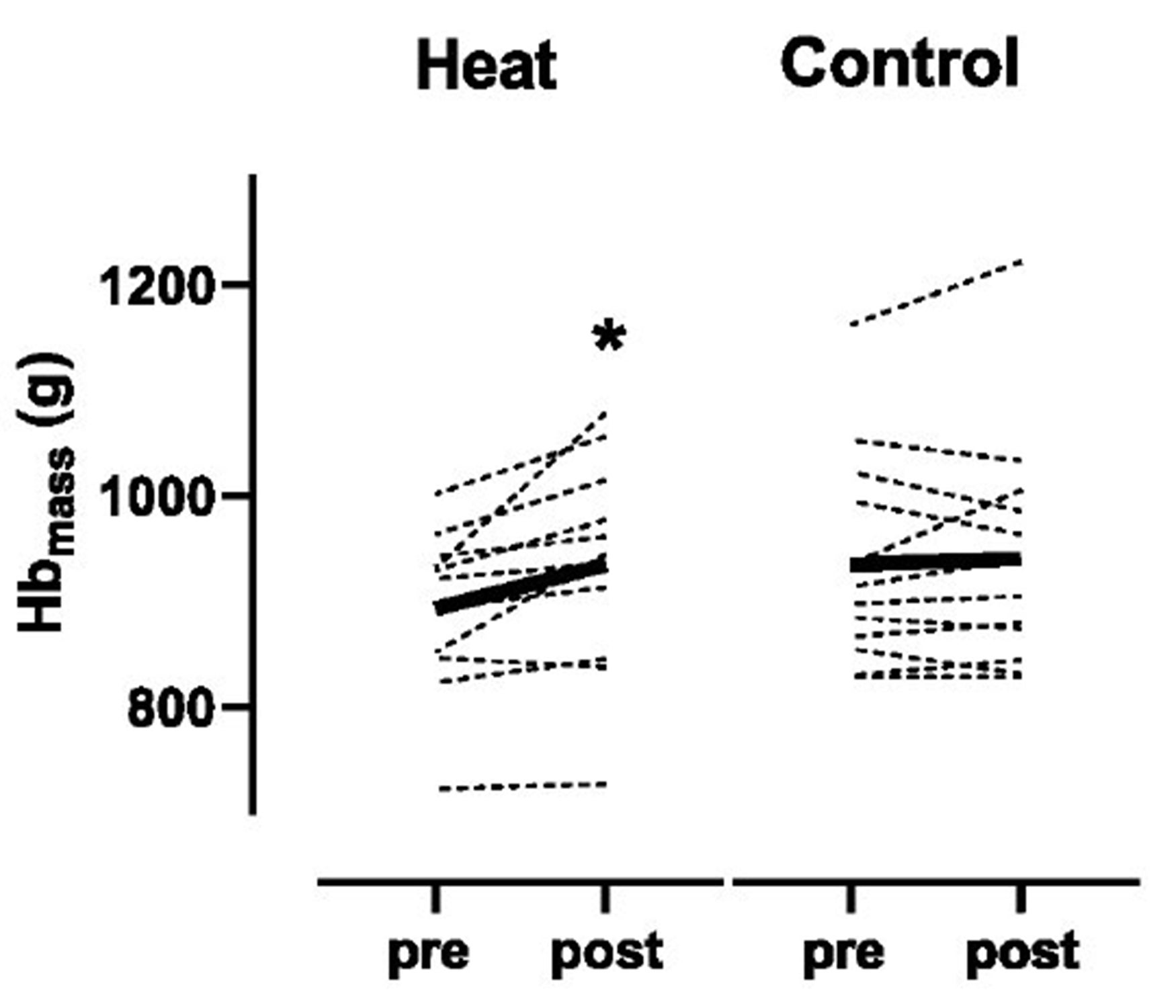This is the time of year when fitness journalists write articles about how the miserable heat that’s ruining your workouts is actually doing you a big favor. You’re lucky to be dripping buckets of sweat and chafing up a storm, because heat is the “poor man’s altitude,” ramping up the physiological demands of your workout and triggering a series of adaptations that enhance your endurance.
Here’s the version of that story that I wrote two summers ago, and I’m sticking to it. But I may need to update the rationale for why heat is so great, based on . According to a research team led by Carsten Lundby and Bent Rønnestad at Inland University of Applied Sciences in Norway, heat boosts levels of oxygen-carrying hemoglobin in your blood, just like altitude training—but it’s not a quick fix.
One of the key determinants of endurance performance is how quickly you can ferry oxygen from your lungs to your muscles via your blood. Specifically, it’s the hemoglobin in your red blood cells that grabs the oxygen. Spend a few weeks at high altitude, where the air is thin, and your body responds by generating more hemoglobin. That’s why the vast majority of elite endurance athletes do altitude training.
Heat training works differently. The most notable change, after just a few days, is a dramatic increase—of up to 20 percent—in the volume of plasma coursing through your veins. That’s the part of the blood that ��DZ����’t include hemoglobin-rich red blood cells, so it’s not immediately obvious whether more plasma will enhance your endurance under moderate weather conditions. In fact, there’s an among scientists on precisely that question. One theory, for example, is that the extra plasma dilutes the accumulation of lactate during hard exercise. (But there’s no doubt that it boosts performance in hot conditions: the extra plasma volume helps shunt excess heat to your skin, among other things.)
When The Journal of Physiology hosted a debate a few years ago on whether heat training boosts performance in moderate conditions, the coauthor of arguing against the proposition was none other than Carsten Lundby. He ��DZ����’t buy the claim that more plasma is useful on its own.
But for the past few years, Lundby and his colleagues have been considering another possibility. The extra plasma volume has the effect of diluting the concentration of red blood cells in your blood, a quantity known as your hematocrit. If your total blood is made up of 45 percent red blood cells by volume, your hematocrit is 45. If heat training causes your plasma volume to increase, that will lower your hematocrit.
Lundby’s hypothesis is based on the idea that your kidneys are constantly monitoring hematocrit, trying to keep it in a normal range. If your hematocrit has a sustained decrease, the kidney responds by producing EPO to trigger the production of more hemoglobin-rich red blood cells. Unlike the rapid increase in plasma volume, this is a slower process. Lundby and his colleagues figure it could take about five weeks.
He and his colleagues published back in November in Frontiers in Physiology. After five and a half weeks, 12 trained cyclists doing an hour of heat training five days a week (incorporated into their regular training) did indeed show a small hemoglobin increase compared to a matched group of nine cyclists doing the same training in cooler conditions. But there was a lot of individual variation in the results, possibly because the subjects weren’t all at the same level of fitness.
For the new study, they recruited truly elite cyclists with an average VO2 max of 76.2 milliliters of oxygen per kilogram of body weight per minute. They were training about ten hours a week during the five-week study, and into that regimen, they incorporated five afternoon sessions of 50 minutes of “light exercise” on a stationary bike. The 11 cyclists in the heat group did those sessions in about 100 degrees and 65 percent humidity; the 12 cyclists in the control group did the same sessions at 60 degrees and 25 percent humidity, aiming for the same subjective effort level. During the heat sessions, the cyclists were limited to half a liter of water to ensure mild dehydration, which is thought to be one of the triggers for plasma volume expansion.
The key outcome measure: total hemoglobin mass increased 893 to 935 grams in the heat group, a significant 4.7 percent increase. In the control group, hemoglobin mass stayed essentially unchanged, edging up by just 0.5 percent. Here’s how the individual results looked:

The study also included a bunch of physiology and performance tests, including VO2 max, lactate threshold, and a 15-minute time trial. There were no statistically significant differences between the groups, but several of the outcomes did show “small to intermediate effect sizes” favoring the heat group. For example, the heat group increased power output at lactate threshold by 2.8 percent, while the control group decreased by 0.4 percent. Also, the heat group increased average power during the 15-minute trial by 6.9 percent, while the control group improved by 3.4 percent.
All in all, the results are cautiously encouraging. They don’t prove that Lundby’s hypothesis about diluted blood stimulating more EPO is what caused the changes, but they suggest that something good seems to happen after about five weeks.
That’s good news, but it’s also a problem, in a way. One of the reasons that heat training has garnered so much attention over the past few years is that it’s relatively practical and accessible. Only a tiny fraction of the world’s athletes can spend a month in the Alps before every major race. But lots of people can go heat-training just by stepping out the front door—or even, according to some studies, by lounging in the or sauna after workouts.
Committing to five long weeks of miserable, sticky heat training is a bigger ask, though. Lundby and his colleagues acknowledge this limitation, noting that “this type of training may only serve little relevance in amateur sport.” Still, for those looking for every possible edge, the results will undoubtedly attract attention. And for those living in places like Texas (or even supposedly cooler parts of the continent, like Toronto, where I live, which has started the summer with an oppressive streak of heat warnings), it’s much needed consolation. You may not have chosen to undergo week after week of heat training, but at least you might get some hemoglobin out of it.
For more Sweat Science, join me on and , sign up for the , and check out my book .


